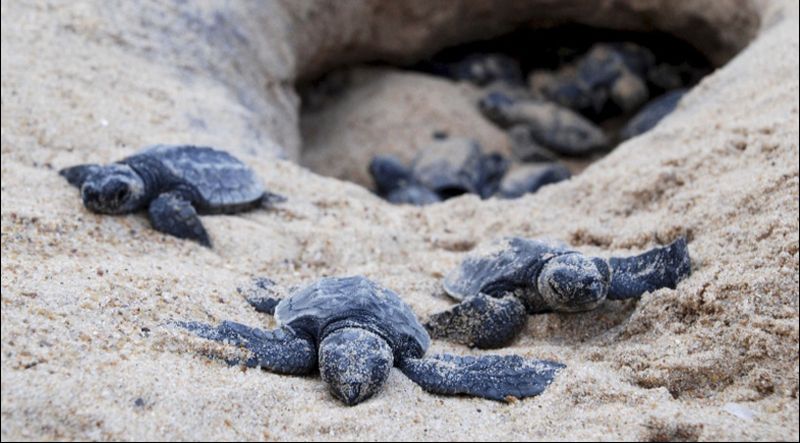UNAIR NEWS – Indonesia, which has been named one of the megadiverse countries, has abundant biodiversity, including turtles. Based on the data, 6 out of 7 turtle species spread in the world have been found reproducing in Indonesia, and the most common is the green sea turtle ( Chelonia mydas ).
Over time, the green sea turtle population continues to decline due to increasing human activities. So that conservation efforts need to be made to prevent the extinction of green sea turtles. For this reason, UNAIR Faculty of Fisheries and Marine Sciences student, Abang Aldhian Randiani Putera, supervised by Dr. Laksmi Sulmartiwi, S.Pi., MP and Ir. Wahju Tjahjaningsih, M.Si. has conducted research to determine the ecological aspects of green sea turtle nesting to support the conservation and development of turtle populations.
“The reason for the decline in the turtle population can be due to anthropogenic factors such as industrial activities that produce waste or garbage as well as ecological factors such as global warming,” he said to UNAIR NEWS on December 31, 2021.
He continued, This temperature change has a direct impact on the sand temperature where the green sea turtle lays eggs. The temperature of the nest sand will affect the incubation period of sea turtle eggs, because the lower the sand temperature, the longer the incubation period.
“Therefore, in conservation efforts on turtle nesting, optimal depth data for hatching eggs needs to be acquired because it determines factor for success in turtle hatching,” he said.
This research was conducted in Meru Betiri National Park (TNMB), which is a green sea turtle nesting habitat in Indonesia and also one of the Turtle Conservation Areas. He applied four treatments in the form of different oviposition depths using 20 green turtle eggs in each treatment.
“Where treatment A; oviposition of eggs at a depth of 30 cm , B ; oviposition of eggs at a depth of 50 cm, C; oviposition of eggs at a depth of 70 cm and D ; oviposition of eggs at a depth of 90 cm, which is the depth of egg retrieval time as a control,” he explained.
The results showed that the depth of the hatchery had a significant effect on the incubation period of eggs and the percentage of successful hatching of green sea turtle eggs. The average incubation for hatching green turtle eggs was 58 days at a depth of 50 cm and 70 cm from the sand surface. It happens because the temperature at that depth is relatively stable compared to the others so that the eggs can develop well.
“Because the temperature stability of the sand at the center of the turtle nest is a determining factor for the success of hatching turtle eggs,” he concluded. (*)
Author: Ivan Syahrial Abidin
Editor: Nuri Hermawan





